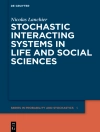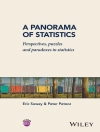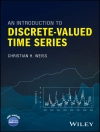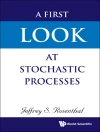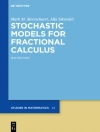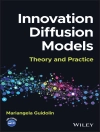In the evaluation of healthcare, rigorous methods of quantitative assessment are necessary to establish interventions that are both effective and cost-effective. Usually a single study will not fully address these issues and it is desirable to synthesize evidence from multiple sources. This book aims to provide a practical guide to evidence synthesis for the purpose of decision making, starting with a simple single parameter model, where all studies estimate the same quantity (pairwise meta-analysis) and progressing to more complex multi-parameter structures (including meta-regression, mixed treatment comparisons, Markov models of disease progression, and epidemiology models). A comprehensive, coherent framework is adopted and estimated using Bayesian methods.
Key features:
* A coherent approach to evidence synthesis from multiple sources.
* Focus is given to Bayesian methods for evidence synthesis that can be integrated within cost-effectiveness analyses in a probabilistic framework using Markov Chain Monte Carlo simulation.
* Provides methods to statistically combine evidence from a range of evidence structures.
* Emphasizes the importance of model critique and checking for evidence consistency.
* Presents numerous worked examples, exercises and solutions drawn from a variety of medical disciplines throughout the book.
* Win BUGS code is provided for all examples.
Evidence Synthesis for Decision Making in Healthcare is intended for health economists, decision modelers, statisticians and others involved in evidence synthesis, health technology assessment, and economic evaluation of health technologies.
Inhaltsverzeichnis
Preface
1. INTRODUCTION
1.1. The rise of health economics
1.2. Decision-making under uncertainty
1.3. Evidence-based medicine
1.4. Bayesian statistics
1.5. NICE
1.6. About this book
1.7. Summary key points
1.8. Further reading
2. BAYESIAN METHODS AND WINBUGS
2.1. Introduction to Bayesian methods
2.2. Introduction to Win BUGS
2.3. Advantages and disadvantages of a Bayesian approach
2.4. Summary key points
2.5. Further reading
2.6. Exercises
3. INTRODUCTION TO DECISION MODELS
3.1. Introduction
3.2. Decision tree models
3.3. Model parameters
3.4. Deterministic decision tree
3.5. Stochastic decision tree
3.6. Sources of evidence
3.7. Principles of synthesis for decision models (motivation for the rest of the book)
3.8. Summary key points
3.9. Further reading
3.10. Exercises
4. META-ANALYSIS USING BAYESIAN METHODS
4.1. Introduction
4.2. Fixed effect model
4.3. Random effects model
4.4. Publication bias
4.5. Study validity
4.6. Summary key points
4.7. Further reading
4.8. Exercises
5. EXPLORING BETWEEN STUDY HETEROGENEITY
5.1. Introduction
5.2. Random effects meta-regression models
5.3. Limitations of meta-regression
5.4. Baseline risk
5.5. Summary key points
5.6. Further reading
5.7. Exercises
6. MODEL CRITIQUE AND EVIDENCE CONSISTENCY IN RANDOM EFFECTS META-ANALYSIS
6.1. Introduction
6.2. The random effects model revisited
6.3. Assessing model fit
6.4. Model comparison
6.5. Exploring inconsistency
6.6. Summary key points
6.7. Further reading
6.8. Exercises
7. EVIDENCE SYNTHESIS IN A DECISION MODELLING FRAMEWORK
7.1. Introduction
7.2. Evaluation of decision models: one-stage vs two-stage
7.3. Sensitivity analyses (of model inputs and model specifications)
7.4. Summary key points
7.5. Further reading
7.6. Exercises
8. MULTI-PARAMETER EVIDENCE SYNTHESIS IN EPIDEMIOLOGICAL MODELS
8.1. Introduction
8.2. Prior and posterior simulation in a probabilistic model: maple syrup urine disease – MSUD
8.3. A model for prenatal HIV testing
8.4. Model criticism in multi-parameter models
8.5. Evidence-based policy
8.6. Summary key points
8.7. Further reading
8.8. Exercises
9. MIXED TREATMENT COMPARISONS
9.1. Why go beyond ‚direct‘ head-to-head trials?
9.2. A fixed treatment effect model for MTC
9.3. Random effect MTC models
9.4. Model choice and consistency of MTC evidence
9.5. Multi-arm trials
9.6. Assumptions made in MTC
9.7. Embedding an MTC within a cost-effectiveness analysis
9.8. Extension to continuous, rate and other outcomes
9.9. Key points
9.10. Further reading
9.11. Exercises
10. MARKOV MODELS
10.1. Introduction
10.2. Continuous and discrete time Markov models
10.3. Decision analysis with Markov models
10.4. Estimating transition parameters from a single study
10.5. Propagating uncertainty in Markov parameters into a decision model
10.6. Estimating transition parameters from a synthesis of several studies
10.7. Summary key points
10.8. Further reading
10.9. Exercises
11. GENERALISED EVIDENCE SYNTHESIS
11.1. Introduction
11.2. Deriving a prior distribution from observational evidence
11.3. Bias allowance model for the observational data
11.4. Hierarchical models for evidence from different study designs
11.5. Discussion
11.6. Summary key points
11.7. Further reading
11.8. Exercises
12. EXPECTED VALUE OF INFORMATION FOR RESEARCH PRIORITISATION AND STUDY DESIGN
12.1. Introduction
12.2. Expected value of perfect information
12.3. Expected value of partial perfect information
12.4. Expected value of sample information
12.5. Expected net benefit of sampling
12.6. Summary key points
12.7. Further reading
12.8. Exercises
APPENDICES
Appendix A1: Abbreviations
Appendix A2: Common Distributions
NOMENCLATURE/NOTATION
Index
Über den Autor
Nicky Welton, Department of Social Medicine, University of Bristol
Dr Welton’s research includes Bayesian statistical modeling in epidemiology and evidence synthesis and evidence consistency.
Alex Sutton, Department of Health Sciences, University of Leicester
Dr Sutton, senior lecture in medical statistics, has a primary research interest in meta-analysis. This specifically includes methods to combine evidence from disparate sources, and methods to deal with the problem of publication bias. With numerous published papers in a variety of journals he has also collaborated on over 15 substantive evidence synthesis projects. He is lead author on one of the first textbooks on meta-analysis in medicine and is co-editor on a recently published Wiley book on publication bias.
Nicola Cooper, Department of Health Sciences, University of Leicester
Dr Cooper’s primary research interest is in the interface and integration of medical statistics and health economics. This specifically includes methods for statistical modelling of cost data, integration of evidence synthesis within a decision-modelling context, handling of missing data in economic evaluations conducted alongside clinical trials, and the application of Bayesian statistical methods to all of the above.
Keith Abrams, Department of Health Sciences, University of Leicester
Professor Abrams‘ research interests include the development and application of Bayesian methods in healthcare evaluation, systematic reviews and meta-analysis, and the joint modeling of longitudinal and time-to-event data. He has published dozens of articles in numerous international journals and is the co-author of two Wiley books in this area.
Anthony E Ades, Department of Social Medicine, University of Bristol with over 30 published articles in the last three years, Professor Ades‘ research interests include statistical methods for multi-parameter evidence synthesis in epidemiology, disease mapping and economic evaluation; Bayesian decision theory and the expected value of information; statistical and epidemiological methods in infectious disease surveillance.






